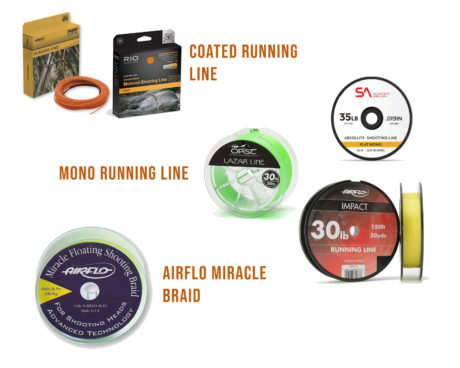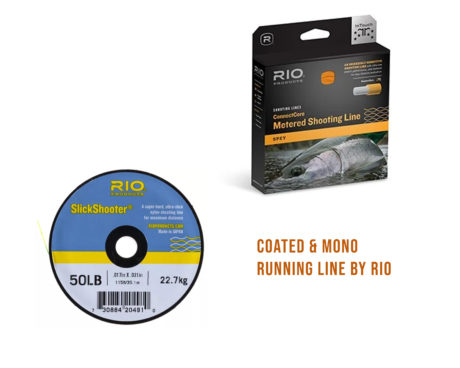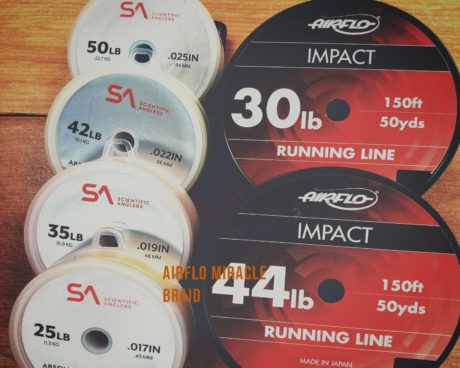A major part of Spey or two-handed rod fishing is the running line or shooting line. In both Skagit and Scandi line setups, you have 3 major parts. The shooting head, a tip or leader, and a running line. Both systems use the same running lines or shooting lines. In recent years many people have discovered using straight 30lb or 40lb monofilament has helped anglers cast further versus using traditional coated running line. Back in 2013, we posted about using standard mono for switch rods. You can check it out here. Since then line manufacturers have they started making monofilament lines specifically for two-hand setups.
Since that post in 2013, there have been significant advances in the development of running/shooting line for Spey Casting. Like a lot of other aspects of fly fishing running lines are subjective per the caster and casting abilities. That being said, here are some general cons/pros for coated, monofilament, and braided lines. If you haven’t tried a new line, it’s a good time to try something new.

COATED RUNNING LINES
Cons
- Expensive
- The coating can make the line “stick” to the water
- Most difficult to shoot longer casts
Pros
- Good for beginning Spey casters
- Best line management out of all options
- Not susceptible to line memory
- Floats well
- Best for cold tempatures

MONOFILAMENT RUNNING LINE
Cons
- Susceptible to line memory
- Susceptible to line twist
- Can be difficult to manage while stripping and initiating a cast due to its super slickness and small diameter
Pros
- Mega distance and line speed
- Relatively inexpensive
- Less bulk

BRAIDED RUNNING LINE
Cons
- Makes a lot of noise
- Potential for fingers to get cut
- Difficult to rig up
- Can get soggy
- Not the best choice in cold temperatures
Pros
- Shoots well for distance
- Good grip for better line management
- Little to no line memory

In general, if you’re new to Spey or two-handed casting, start off with a coated line. Once you get a good feel for casting you can switch things up to identify what you like best. The best advice is to get good instruction on casting. Talk to your local fly shop to see what’s available in casting classes. While you’re there, check out the lines to find your best fit and let us know how it goes.
Leave a Reply